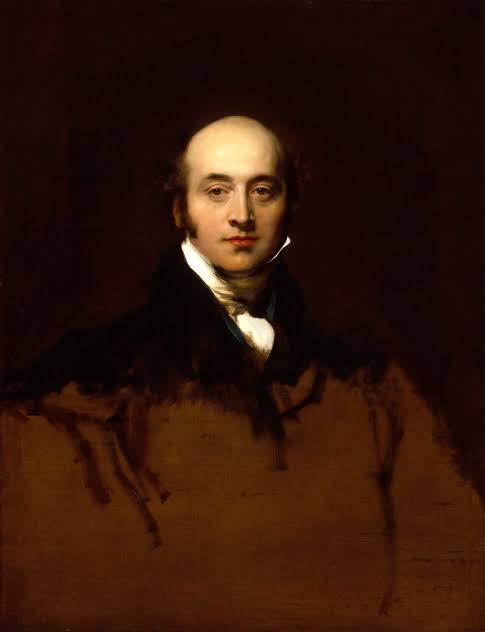Sir Thomas Lawrence, a preeminent portrait painter of the late 18th and early 19th centuries, captured the essence of British nobility and society with unparalleled skill and sensitivity. Born on April 13, 1769, in Bristol, England, Lawrence demonstrated prodigious talent from a young age. His rise to prominence in the art world was meteoric, and by the time he was in his twenties, he was already one of the most sought-after portrait artists in Britain. Lawrence’s ability to imbue his subjects with lifelike presence and psychological depth solidified his reputation as one of the greatest portraitists of his time.
Lawrence’s oeuvre is extensive and varied, encompassing portraits of royalty, politicians, and literary figures. His style evolved throughout his career, reflecting the changing tastes and artistic movements of the period. Early in his career, Lawrence was influenced by the Rococo style, characterized by its lightness, elegance, and use of soft colors. However, he soon transitioned to a more Neoclassical approach, emphasizing clarity, order, and idealized beauty. Lawrence’s mature style is marked by its vivid realism, dynamic compositions, and masterful use of light and shadow.
One of Lawrence’s most famous works is his portrait of Sarah Barrett Moulton, known as “Pinkie”. Painted in 1794, the portrait depicts a young girl dressed in a pink frock, standing against a backdrop of rolling clouds and a blue sky. “Pinkie” is often paired with Thomas Gainsborough’s “The Blue Boy,” and the two paintings are considered icons of English portraiture. The charm and innocence captured in “Pinkie” exemplify Lawrence’s ability to convey the inner life of his subjects, making it one of his most beloved works.
Lawrence’s technical proficiency is evident in his meticulous attention to detail and his ability to render textures, such as the delicate fabric of Pinkie’s dress and the softness of her skin. His use of color is particularly striking, with the vibrant pink of the dress contrasting beautifully with the cooler tones of the sky. This masterful use of color and composition not only highlights Pinkie’s youthful vitality but also draws the viewer’s eye to her expressive face, which radiates a sense of curiosity and wonder.
In addition to his portraits of children, Lawrence is renowned for his depictions of British aristocracy. His portraits of King George III, Queen Charlotte, and other members of the royal family are notable for their grandeur and regal bearing. These works were not merely decorative but served a political purpose, reinforcing the power and prestige of the monarchy. Lawrence’s ability to capture the dignity and authority of his subjects made him the preferred portraitist of the British elite.
Lawrence’s portrait of Arthur Wellesley, the Duke of Wellington, is another masterpiece that showcases his skill in capturing the character and stature of his subjects. Painted in 1815, shortly after Wellington’s victory at the Battle of Waterloo, the portrait depicts the Duke in military uniform, exuding confidence and determination. Lawrence’s portrayal of Wellington is both a celebration of his military achievements and a testament to his formidable personality.
Throughout his career, Lawrence received numerous accolades and honors. In 1815, he was knighted by the Prince Regent, and in 1820, he was elected president of the Royal Academy, a position he held until his death. His international reputation was further cemented when he was commissioned to paint portraits of prominent European leaders, including Pope Pius VII and Emperor Francis I of Austria. These portraits not only demonstrated Lawrence’s versatility but also his ability to adapt his style to suit the preferences and cultural contexts of his diverse clientele.
Despite his success, Lawrence faced personal and professional challenges. He was often criticized for his extravagant lifestyle and financial mismanagement, which left him in debt for much of his life. Additionally, his relentless work schedule took a toll on his health, leading to his premature death in 1830 at the age of 60. However, Lawrence’s legacy endures through his remarkable body of work, which continues to captivate and inspire audiences around the world.
Lawrence’s influence on subsequent generations of artists cannot be overstated. His innovative use of light and shadow, dynamic compositions, and psychological insight set new standards for portraiture. Artists such as John Singer Sargent and William Merritt Chase drew inspiration from Lawrence’s techniques, further cementing his impact on the art world. Lawrence’s portraits remain highly regarded for their technical excellence and their ability to convey the personality and presence of the sitter.
In examining Lawrence’s contributions to art, it is clear that his portraits transcend mere representation. They offer a window into the social and cultural milieu of his time, providing valuable insights into the lives and personalities of his subjects. His ability to capture the human spirit with such clarity and empathy ensures that his works remain relevant and revered to this day.
In conclusion, Sir Thomas Lawrence’s artistry and legacy are enduring testaments to his genius as a portrait painter. His works, including the iconic Pinkie (Sarah Barrett Moulton), continue to captivate and inspire viewers, showcasing his unparalleled ability to capture the essence of his subjects. Lawrence’s portraits are not just images; they are vibrant, living representations that speak to the timeless human condition. His contributions to the art of portraiture remain unparalleled, securing his place as one of the greatest artists in history.
